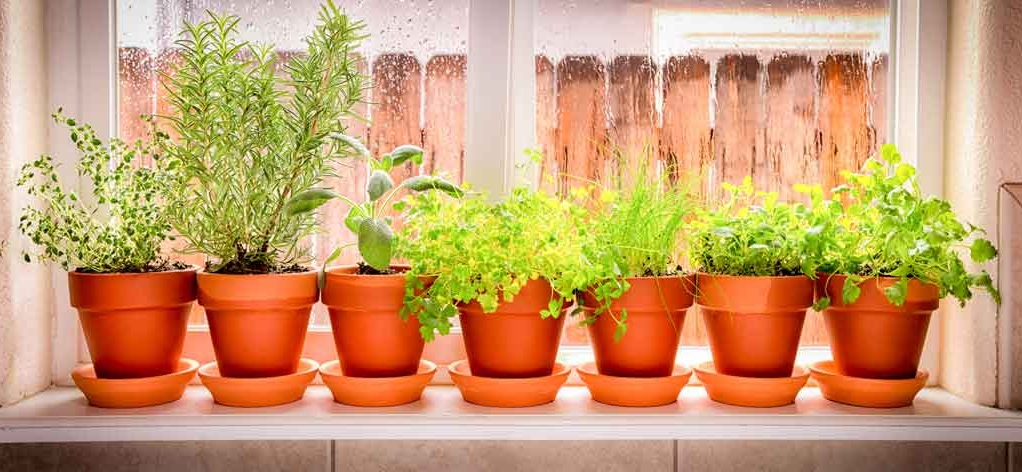Gardening can be a great way to productively pass the time while quarantined (social distancing, self-quarantine and self-isolation) while also adding greenery and potentially some food to your home. And for an added bonus – with many schools closed until further notice, indoor gardening is a great way to keep kids entertained and teach them something new and useful.
Here are some edible plants with short growing seasons that you can grow indoors or in your backyard over the next few weeks.
Microgreens
Microgreens are the best choice if you are looking for a gardening project with quick results. Microgreens are edible shoots of plants that are harvested just after the first leaves develop, about two to three weeks after planting. They can be used as a garnish, or to add texture and flavor to your dishes.
You can grow them from the seeds of many common vegetables and other edible plants, such as sunflowers, wheat, radishes and salad greens like arugula. Many herbs are grown as microgreens, including dill, parsley and basil.
To grow microgreens, find a south-facing window where the plants can get plenty of daylight (though some microgreens, like corn shoots, grow in the dark from seed until harvest). Fill shallow trays with soil, then sprinkle the seeds on top. Cover with a lid or plastic bag to trap humidity while the seeds germinate.
Once the plants have germinated and started to grow, place the tray in the sunlight. Water with caution. The preferred way of watering microgreens is bottom watering, or pouring water into a tray that sits underneath the containers as needed. The time to harvest will depend on the variety, but generally microgreens will be ready to eat in two to three weeks.
Salad greens
Many delicious leafy greens like arugula, spinach and mesclun will be ready to harvest after only a few weeks of growing indoors. Find a sunny, south-facing window or set up some grow lights. Fill flat, shallow containers, a multi-cell tray or small plastic pots (four to six inches deep will do) with a seed starting soil mix. Moisten the soil and arrange the seeds in rows, about an inch apart. Cover with a thin layer of the mix. Place your containers in a warm location and cover them loosely with plastic wrap or a lid. Check daily for signs of sprouts.
In about three to four weeks, cut only what you need, starting with the outer leaves first, from the base of the leaves about an inch from the soil. Leave the remaining leaves to grow for a few days longer.
Turnips
Some turnip varieties — like Snowball, Tokyo Cross and Purple Top Milan (whose greens are arguably even more nutritious and delicious than its flesh) — will be ready to harvest in less than two months of growing.
Find a 2-gallon container and line the bottom with coarse gravel. Fill with a well-drained, sterilized potting mix. Sow the turnip seeds 1/2-inch deep and at least 4 inches apart. Place in a sunny windowsill or under grow lights, and water with cool water once a day.
You can harvest turnip roots after approximately 50 days, when they are about 2 inches in diameter, or harvest turnip greens after approximately 40 days, when they are about 4 inches tall.
Scallions
You can regrow scallions, so you don’t even need seeds. After cooking, save the ends of the green onion bulbs with the roots attached. Place the bulbs root-end down in a small jar or glass and add enough water to cover the roots. Set the jar on a sunny windowsill, and, after about two weeks, your green onions will have formed long green shoots.
Herbs
Certain herbs grow easily and quickly indoors, particularly mint and chives. To get started with an indoor herb garden, first pick a sunny and warm location and fill a well-drained container with potting soil. When watering, focus on the roots, but do not overwater the herbs and drown their simple root systems. Stick your fingers beneath the soil; if you feel moisture, skip watering that day.
If you want to continue growing them, prune the leaves at the top, not the bottom. The big leaves on the bottom act as a sturdy base. Remove the end 1-2 inches of your plant’s stem. That exposed end will split and grow into two separate branches. Never prune more than one-third of the plant.
Many herbs — including basil, mint and rosemary — can be placed in water to grow new roots and transfer to a pot of soil for regrowth as well.
Source: bangordailynews.com

